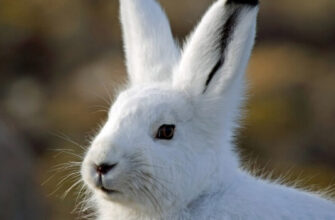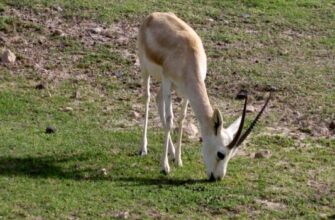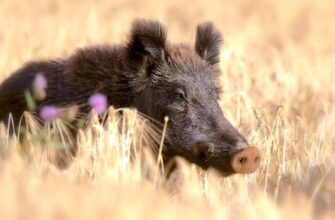European explorers who visited the forests of the New World in the 16th century noticed the similarity of tufts of chestnut hair and peculiar sideburns on the heads of local monkeys to Capuchin monks in brown robes with large hoods. That's why they named them — Capuchin.
Victorian organ grinders had capuchin monkeys who danced and collected coins. These animals, with their cute faces and adorable antics, are now appearing in all sorts of performances and films such as Pirates of the Caribbean. But the most famous capuchin is Marcel, Ross' favorite monkey from Friends.
View origin and description
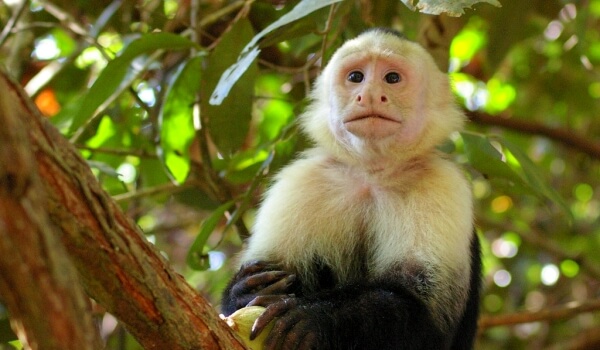
Photo Capuchin
There are four New World monkey species: Cebidae, Aotidae, Pitheciidae, and Atelidae. They are all slightly different from Old World primates in many respects, but the most prominent difference is the nose. This feature is most commonly used to distinguish between two groups. The scientific name for New World monkeys, Platyrrhini, means “flat nose”. Their noses are indeed flatter, with nostrils pointing sideways, unlike the narrow noses of Old World monkeys.
Most American monkeys have long, prehensile tails. These are small animals, arboreal species – live in trees, and nocturnal – are active at night. Unlike most Old World monkeys, many American monkeys form monogamous pairs and show parental care for the younger generation.
Video: Capuchin
The scientific name of the genus Capuchin in Latin is Cebus. It comes from the Greek word kêbos, meaning long-tailed monkey. This genus has united about thirty subspecies, grouped into four species. It is a member of the Cebidae (tenacious-tailed) family, which includes two genera, saimirs and capuchins, and is an arboreal species.
The species taxonomy levels of the genus itself remain highly controversial, and alternative research methods suggest a new classification.
In 2011, Jessica Lynch Alfaro proposed that the robust capuchins (formerly the C. apella group) be placed in a separate genus, Sapajus. Previously, they were part of the genus of graceful capuchins (C. capucinus). According to genetic studies by Lynch Alfaro, the gracile and robust capuchins diverged approximately 6.2 million years ago.
The divergence was apparently caused by the formation of the Amazon River, which separated the monkeys from north of the river, turned into graceful capuchins, from primates in the Atlantic forest south of the river, which turned into robust capuchins.
Appearance and features
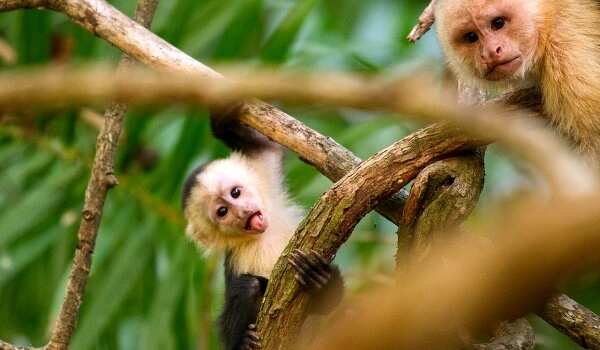
Photo: Capuchin animal
Agile and slender, Capuchin Monkeys weigh just 1.36 — 4.9 kg. Fur varies from species to species, but is most commonly seen with cream or light brown coloration around the face, neck, and shoulders (the exact color and pattern varies by species). The rest of the body is dark brown and even black.
On the back of the capuchin, the hair is shorter and darker than on other parts of the body. The face of this cute monkey varies from white to pink. The length of the tail corresponds to the length of the entire body. It is covered with wool and is partially able to wrap itself around the branches of plants. These primates are round-headed, resilient and tightly built. The body reaches 30–55 cm in length.
Interesting fact! Capuchin monkeys are so named because they look like miniature Spanish Capuchin friars with their white faces and dark brown robes and hoods on their heads.
Capuchin monkeys are few compared to other species. They live in the wild from 10 to 25 years, although in captivity they can live up to 45 years. Their long, prehensile tail and thumbs help them live high in the branches of the rainforest. The tail acts as a fifth appendage – grabbing onto branches and helping to balance as they move through the trees. Their thumbs assist them in many daily tasks, from foraging for food to grooming their coat.
The dominant male primate is the leader of the group. He must protect his territory and group members from predators and capuchin monkeys from other groups. On the other hand, the leader mates and always eats first.
Where does the capuchin live?
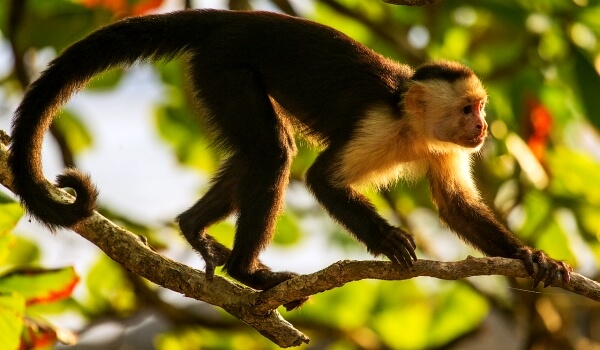
Photo: Capuchin Monkey
Capuchins are found in a wide range of habitats, from rainforest to lowland, wet to dry climate. They are native to many countries and islands in South America and the Caribbean.
Their range includes:
- Honduras. On a vast expanse in a tropical area;
- Brazil. In the rainforests on both sides of the Amazon;
- Peru. In the eastern part of the country;
- Paraguay. In the tropical part of the country;
- Colombia. Most of the territory;
- Costa Rica. On the tropical coast;
- Panama. Along the coast and in the tropical forests of the central part;
- Argentina. They are found in the eastern and western parts of the country.
In Central America and the Caribbean coast, they are located in moist lowland forests, and on the Pacific coast, their habitat is deciduous dry forest. It is known that capuchins quickly adapt to human intrusion and develop much better than most primate species in the same conditions. But they are most comfortable in areas with dense tree canopy, which provides them with shelter, food, a safe way to travel, and a safe place to sleep.
On average, individual monkeys will travel up to 3.5 km per day within their territory. Usually the range of one clan covers an area of 50-100 hectares of land. Capuchin monkeys often move from tree to tree without even touching the ground.
What does a capuchin eat?
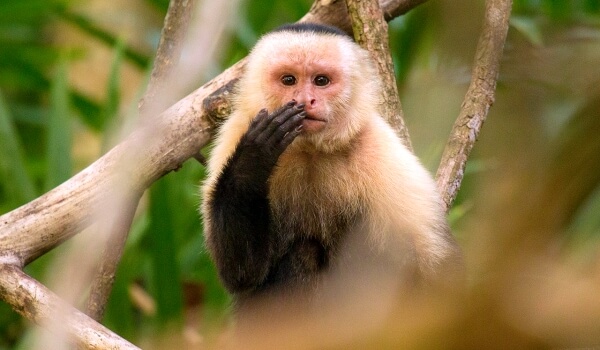
Photo: Capuchin
Capuchins cooperate within their group in the collection and distribution of food. They consume a diverse range of food types, which is greater than other species of the Cebidae family. They are omnivores and consume various plant parts such as leaves, flowers, fruits, seeds, nuts, tree bark, sugar cane, bulbs, buds and exudates, as well as insects, spiders, bird eggs and even small vertebrates such as lizards and small rodents.
Capuchins have also been observed to be especially good at catching frogs. They are characterized as innovative and extreme gourmets due to their ability to derive their livelihood from a wide range of unlikely foods that can ensure their survival in habitats with extremely limited food options. Capuchin monkeys that live near water will also eat crabs and shellfish by breaking their shells.
Capuchin monkeys are very intelligent animals that use various types of tools (sticks, twigs, stones) to open the shell , nuts, hard seeds and shellfish.
Some species have been known to eat up to 95 different plant species. They use rocks to crack open nuts, seeds, shellfish, and other prey. Like many other primate species, capuchins help spread plant and fruit seeds throughout their habitat, helping to increase plant biodiversity and regeneration.
Capuchins constantly need water needs water. They take liquid from almost any source. They drink water from hollows in trees, from streams and other accessible reservoirs and sources. during the dry season, they have to travel long distances every day to the place where water seeps.
Character and lifestyle features
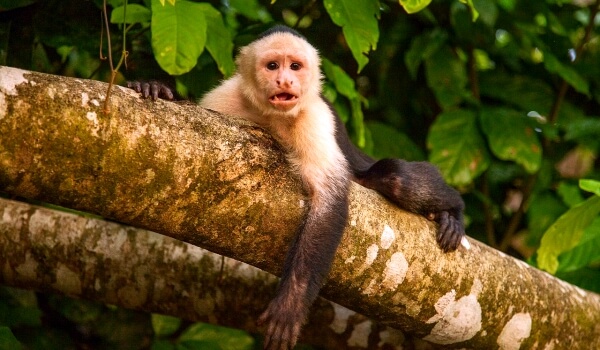
Photo: Capuchin Animal
Capuchins usually live in large groups (10 — 35 members) in the forest though can easily adapt to places colonized by humans. But they can be divided into smaller groups for care, socialization and foraging.
Most species have a linear hierarchy, which means that both males and females have their own order of dominance, but the alpha male of the order always dominates the alpha female. He has basic rights to marry women in his group. However, white-headed capuchin groups are led by both the alpha male and the alpha female. Each group covers a large area, as clan members must seek out the best areas for food.
Fun fact! These primates are territorial animals, clearly marking the central area of their territory with urine and protecting it from intruders.
Stabilization of group dynamics is carried out through mutual grooming, and communication between monkeys occurs with the help of various sounds. Capuchins can jump up to three meters, and they use their skill to get from one tree to another. Remaining hidden among the forest vegetation for most of the day, capuchin monkeys sleep on branches and come down only in search of drinking water.
With the exception of midday naps, they spend the entire day looking for food. At night, they sleep in trees, squeezing between branches. They are undemanding in terms of their habitat and therefore can be found in a variety of areas. Capuchins have complex social structures, long-term relationships in both sexes, and a rich behavioral repertoire that makes them an intriguing subject of scientific observation.
Social Structure and Reproduction
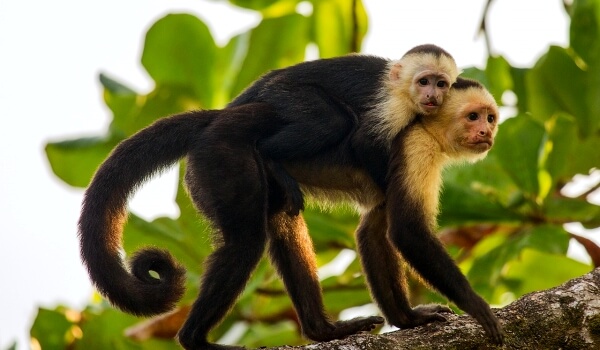
Photo: Baby Capuchin
Capuchins breed at any time of the year, they do not have a special mating season. Although in Central America, births occur more frequently during the dry season and early rainy season (December to April). Females direct most of their energy and mating behavior towards the alpha male. However, when a female reaches the end of her gestation period, she may mate with up to six other males in one day.
Specific targeting of an alpha male does not occur every time, as some females have been found to mate with three – four different males. When an alpha female and a female of lower rank want to mate with an alpha male, the more dominant female gets the rights to the male over the lower rank female. It has been observed that males do not mate with their daughters.
Males urinate on their hands and cover their bodies with urine to fix their territories and attract the attention of females.
The gestation period is about six months (160-180 days). Childbirth, as a rule, is single, but sometimes it happens that the female bears two cubs. Some women give birth at intervals of one to two years. Young females reach maturity in three to four years, males – 8 years.
The mass of their little body of the baby is about 8.5% relative to the weight of the mother. Young individuals cling to the mother's chest until they grow up, then they move to her back. Young capuchins learn how to survive from more experienced adults. Adult male capuchins rarely take part in the care of offspring. Adult primates leave their group after reaching sexual maturity.
Natural enemies of capuchins
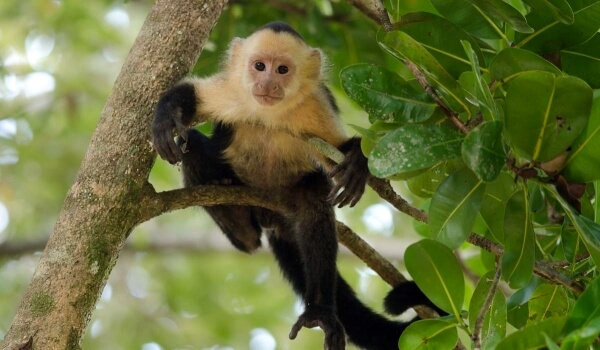
Photo: Capuchin Monkey
Hawks often accompany primates on their paths. Capuchins, feeling threatened, try to be vigilant and hide. Large snakes and boas also tend to grab monkeys, but primates are extremely wary. After discovering a boa constrictor or a snake, members of the group show excitement and try to move away.
Capuchin monkeys spend most of their lives in the treetops, where they can find food and hide from predators.
Among their natural enemies are:
- boa constrictors;
- jaguars;
- hawks;
- eagles;
- large falcons;
- cougars;
- snakes ;
- jaguarundi;
- coyotes;
- tayres;
- crocodiles.
The main predator of the crested capuchin is the harpy eagle, which has been observed to steal small individuals and carry them to its nest. Capuchin monkeys use a special type of warning call (sharp whistle) to notify group members in case of danger. The purr sound is played when the monkeys greet each other.
Representatives of the white-fronted variety stick their fingers deep into the eye sockets of another capuchin, thus showing a friendly attitude. Although often they use their ally's body parts to strike a common enemy with it. These behaviors are ingrained in the repertoire of resourceful primates, but they are also constantly evolving.
Population and Species Status
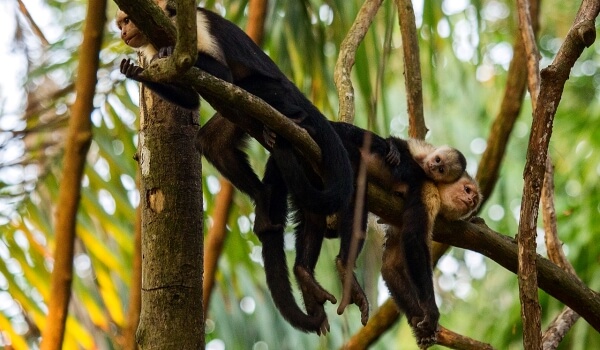
Photo: Capuchin Animal
Capuchins sometimes rob fields, destroy crops, and are considered a problem for farms and nearby communities.
Unfortunately, the number of capuchin monkeys has drastically decreased as a result of:
- Overhunting by local residents who consume their meat for food;
- The pet trade;
- Scientific research;
- And in some regions they have become rare due to the destruction of their habitat .
The funny appearance of capuchins encourages many people to have them as pets. But these animals are very complex and wild. They can even become aggressive, which is why many animal welfare organizations urge people not to keep them as pets.
Capuchin monkeys are considered the smartest of all American species and are easy to train. Therefore, they have been tried to be used to help people suffering from quadriplegia (partial or complete paralysis of the limbs) in many developed countries. It has been observed that capuchin learning behavior is directly related to reward, not curiosity.
That's interesting! During mosquito season, capuchins crush centipedes and rub them on their backs. This acts as a natural remedy for insect stings.
Because they have a high reproductive rate and habitat flexibility, loss of forest does not significantly negatively affect the capuchin monkey population as much as others kinds. So far, capuchin monkeys are not on the endangered species list, although habitat fragmentation is still a threat.


